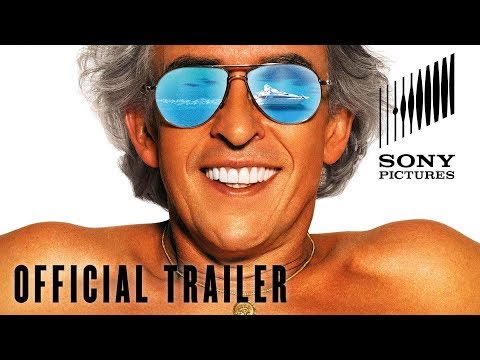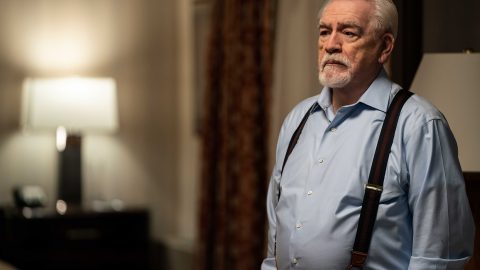
The first time she went to Burning Man, Kate Raudenbush was not an artist. Not yet. She made her first journey into Nevada’s Black Rock Desert in 1999 and five years later built her first art installation there. In the decade-and-a-half since, her monolithic, immersive sculptures have become a regular delight in the temporary metropolis of Black Rock City as well as being exhibited in galleries across the world from the Smithsonian to Seoul. “Burning Man was truly an awakening for me,” says Raudenbush, speaking over Zoom from her home in New York. “I say I’m self-taught, but really, Burning Man was the school where I learned how to make art.”
Raudenbush is just one of the many artists featured in Burning Man: Art On Fire, a new documentary by BAFTA-winning director Gerry Fox which looks past the event’s famed orgiastic debauchery to instead focus on the incredible feats of creativity and ingenuity required to bring large-scale art to one of the planet’s most inhospitable environments. In doing so, it gets close to the heart of what makes Burning Man so different from other festival experiences. I’ve been going since 2014 – my friends and I run a British pub-turned-pink-hued-drag club there called the Queen Dick – so I’ve felt firsthand the magical way Burning Man converts its 80,000 attendees from wide-eyed gawkers into fully-fledged participants.

“We say there’s no spectators,” says Raudenbush. “We’re not building a stage for everyone to come and stare at the DJ. As a participant you are the producer and the set designer and the costume designer. You’re whatever you want to be, and that’s incredibly empowering.”
As chance would have it, Art On Fire arrives in the same year that the global pandemic has caused Burning Man to be cancelled for the first time since founder Larry Harvey and friends first dreamed it up on a beach in San Francisco in 1986. Given that depressing context I feared I’d find watching the film a melancholy experience, a relic of all that we’ve lost. Instead it feels like a powerful and timely reminder of what a community can achieve when it pulls together toward a common goal.

Fox, who hadn’t been to Burning Man before he shot the film in 2018, says he was struck by this DIY sensibility from the moment he arrived in the desert. “It’s a completely different experience to something like Glastonbury,” he says. “The people who get the most out of Burning Man are the people who are also giving back to it. They’re not just an audience, in the sense of seeing the art or going to nighttime raves, they’re actually involved in creating something.”
2018 was a significant year for Burning Man as it was the first since the death of Larry Harvey, the man who did more than any other single person to shape and define what Burning Man has become. One of the film’s most poignant threads follows the bagpipe-playing artist Andrew ‘Haggis’ Johnstone as he sets about constructing the ‘man base’, the elaborate edifice on which the titular Man stands at the exact centre of Black Rock City. He does so knowing it will be the last one his friend had helped conceive. “In the film I struggle to hold back a tear,” says Johnstone. “That’s for Larry. That was the last man base that Larry and I touched, so my overwhelming emotion was: ‘Oh, Larry would have loved this.’”

Harvey had died after suffering a stroke the previous April, just days after attending an exhibition at the Smithsonian American Art Museum celebrating the art of Burning Man. Johnstone says this timing lends Harvey’s death a certain poetry. “The pathos that’s involved is Shakespearean,” he says. “He’d had this silly idea 35 years ago on a beach and he lived to see it enshrined in the Smithsonian before he left us. If he’d shuffled off his coil the week before it would have been tragic. The fact that it happened the week after was almost heroic. It’s the ultimate mic drop.”
Raudenbush, who calls Harvey her “mentor”, commemorated him in her 2018 work ‘Passage Home’ – a series of door-like passageways, the last of which features Harvey in silhouette, wearing his trademark stetson and holding a cigarette. In the film, we see Raudenbush wrestle with the logistics of placing it so that it will perfectly align with the sunrise a week hence. “We called it Larry Henge,” she says with a laugh. “When the sun aligned it was a beautiful moment.”

Of all the work featured in the film, the most ambitious project is carried out by the French architect Arthur Mamou-Mani who that year was charged with building Burning Man’s temple. We follow the construction of his design – christened ‘Galaxia’ – from its beginnings as an algorithmically-created blueprint to its physical construction in the unforgiving desert. Fox captures the heart-in-mouth moment when a crane hoists one half on top of the other and the building finally comes together with an awful crunch. Mamou-Mani’s relief is palpable – as is his joy at the fact he can now get married there.
The temple is one of Burning Man’s most significant locations. Each year the event ends on a weekend with the celebratory burning of the man on the Saturday night, followed by the hushed atmosphere which accompanies the burning of the temple on the Sunday night. Throughout the preceding week people visit the temple to leave messages and remembrances of loved ones they’ve lost. The writer Geoff Dyer, who first went to Burning Man in 1999, points out that this means the temple very quickly becomes a sacred space. “I’m always a sucker for temples,” he says. “I feel I’ve got some sort of Geiger counter in my head where I can feel when a place is emanating that power I want so much, and conversely when a power is converging on it. You really feel that in an incredibly accelerated form at the temple at Burning Man.”

The importance of the temple is brought home by another of Fox’s featured artists, Flash Hopkins. Hopkins is a lovable, gregarious eccentric who’s been part of Burning Man since the very beginning, and in some of the film’s most touching scenes we see him hanging out in Gerlach – the tiny town closest to the Burning Man site – with his “adopted son”, a young man named Tommy Cash. Tragically, Cash died of a heart attack during that year’s event, and it’s when Hopkins goes to pay tribute to both him and Larry at the temple that its power is fully evident. “That moment demonstrated more than anything anyone could have ever said about what that temple means to people spiritually,” says Fox. “Flash has all that bravado, but when he lost one of the people who was closest to him the first thing he wanted to do was come to the temple and have that moment. It was very moving.”
Scenes like those elevate ‘Art On Fire’ from being a simple procedural about the construction of complex sculptures into something more existential. Dyer, who calls Burning Man “a high watermark of civilisation”, says his life has been forever changed by his experiences in Black Rock City. “There are certain things that once you’ve been to Burning Man, you just can’t go back to your old ways,” he says. “You become really intolerant of that low-awareness way of living, where let’s say you live in a block of flats and somebody will keep their apartment clean but will walk around a crisp packet in the common area for 300 days of the year rather than pick it up. One’s sense of what it is to be a citizen is really raised at Burning Man, and I love the way that’s allied with the fact it’s also the craziest, sexiest, everything-est party in the world.”

That sentiment is echoed by Raudenbush, who points out the significance of the grand blank canvas the empty desert provides.“When you’re there and you look out at the whole expanse of everything that we’ve built, your jaw hangs open and you realise: There was nothing here. We brought all of this,” she says wistfully. “Creativity is the best of humanity. If we can remember that when we go out into the ‘default world’ then it can help us realise that if you don’t like this world then you can create something better. It’s important to know that you’re not just at the mercy of the system, especially with the world fucking falling apart right now.”
Burning Man faces the same uncertain future as every other mass event, but Johnstone confirms that he and his team are optimistically working towards a return next year: “I don’t know whether that will be ripped out of our grasp by biology, but we certainly intend to do 2021 out there, gotta hope!” He adds that it remains to be seen whether Burning Man’s utopian community can help us build a better society out here in the ‘default world’. “Larry said that it was a 100 year project, and we’re 35 years in. I don’t think creating a utopia is a bad idea. We need a bit more of that, and a bit less of the other. I think we carry a little bit of that utopia around in our pocket all the time. I know I do.”
‘Burning Man: Art On Fire’ is released 22 August on worldwide TVOD platforms iTunes,
Amazon Prime, GooglePlay and Vimeo On Demand
The post Light your fire: this Burning Man doc will change the way you think about festivals appeared first on NME Music News, Reviews, Videos, Galleries, Tickets and Blogs | NME.COM.








